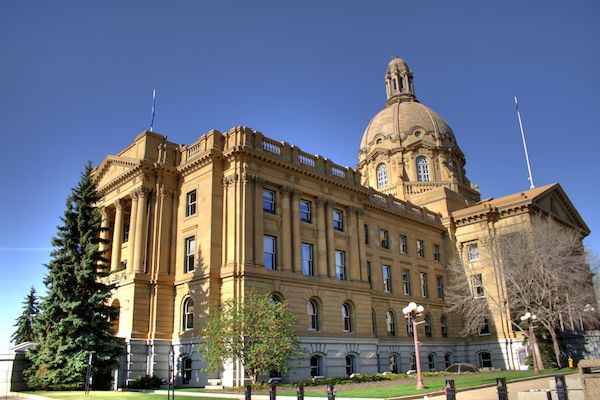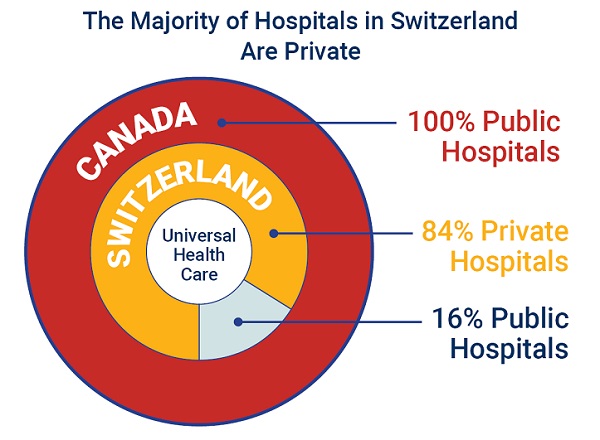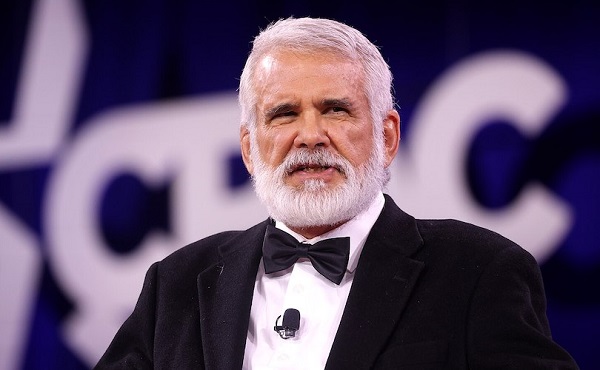Alberta
Protecting vulnerable Albertans this winter

Alberta’s government is investing an additional $21.5 million for Albertans experiencing homelessness and family violence.
The pandemic continues to have a large impact on vulnerable people, and this funding will ensure access to services like 24-7 emergency shelter and support for victims of domestic violence while keeping clients safe.
The government announced this additional support at the Hope Mission at the Herb Jamieson Centre. Alberta’s government fulfilled a platform commitment with $4 million for the centre’s recent construction. This announcement furthers those efforts to support vulnerable people in Alberta.
Alberta’s government is also providing $1.5 million to activate up to 200 additional shelter beds at Commonwealth Stadium and will support on-site overdose prevention and treatment services.
“As we continue to navigate through COVID, one of our top priorities is to make sure all Albertans have a safe place to stay and access to the support they need. Together with the $78 million previously announced by Alberta’s government, this additional funding will help organizations on the front lines deliver the services vulnerable Albertans need.”
“Our community partners are critical to making sure people experiencing homelessness and domestic violence have safe places to stay and where they can still access the supports they need. This funding will go a long way to ensure shelters are providing Albertans with critical supports in a healthy environment.”
“A quick look outside the window, and you’ll see how important this announcement is to the houseless Edmontonians who were looking for a warm place to sleep during this winter. We have identified the shelter gap in recent meetings with the Premier and his ministers, and they have responded by providing emergency funding for the Spectrum shelter, three needed southside shelters and our enhanced capacity emergency shelter at Commonwealth Stadium. We welcome this support and look forward to building on this collaboration to find more permanent and sustained solutions to end houselessness in Edmonton.”
“The Calgary Drop-In Centre has been on the front line of the COVID-19 pandemic, working with our community partners to decrease the spread within our city’s homeless population. We are grateful to our partners at the Government of Alberta for the additional funding, which will support medical staff and overflow spaces to meet the increased demand at our main shelter.”
“This funding will allow us to maintain extra capacity during the critical winter season. With the unpredictability of COVID-19, we will be able to keep people safe and socially distanced. Thank you to the provincial government for equipping us with extra capacity to serve everyone who needs safe, warm shelter during the cold of Alberta’s winter.”
The $21.5-million funding package will be distributed as follows:
- $13 million for emergency homeless shelters
- $6.5 million for isolation facilities
- $2 million for emergency women’s shelters
Emergency homeless shelters
Funding will support 14 expanded homeless shelter facilities to meet physical distancing requirements. Funding will also support, where possible, 24-7 access to regular meal service, showers, laundry services and connection to addictions and mental health services and housing.
Isolation facilities
Funding will support about 285 isolation spaces in 10 communities. These facilities are a critical component of the shelter pandemic response, and help alleviate pressure in the public health system by helping shelter clients who contract COVID-19 isolate and receive medical care if hospitalization is not required. Additional capacity may be added in some rural communities as needed.
Emergency women’s shelters
This funding will support service delivery adjustments at emergency women’s shelters. Due to the pandemic, there has been an increase in domestic violence across Alberta. This funding will help shelter operators offer more support through community outreach and virtual service delivery as well as hotel isolation, and adjust in-shelter services to align with public health orders.
Quick facts
- This funding guarantees these supports will be in place until March 2022.
- This funding is in addition to $78 million announced in 2020.
- Funding will support emergency homeless shelters in Edmonton, Calgary, Red Deer, Grande Prairie, Medicine Hat, Lethbridge, Lloydminster, Drayton Valley, Leduc, Slave Lake and Wetaskiwin.
- The 10 isolation sites are located in Calgary, Edmonton, Fort McMurray, Grande Prairie, Lethbridge, Medicine Hat, Red Deer, Wetaskiwin, Peace River and Lac La Biche.
- With the additional capacity at Commonwealth Stadium, up to 1,280 emergency shelter beds will be available in Edmonton this winter.
- The shelter is anticipated to be operational in early December once an operator has been selected.
Alberta
Alberta Premier Danielle Smith Discusses Moving Energy Forward at the Global Energy Show in Calgary

From Energy Now
At the energy conference in Calgary, Alberta Premier Danielle Smith pressed the case for building infrastructure to move provincial products to international markets, via a transportation and energy corridor to British Columbia.
“The anchor tenant for this corridor must be a 42-inch pipeline, moving one million incremental barrels of oil to those global markets. And we can’t stop there,” she told the audience.
The premier reiterated her support for new pipelines north to Grays Bay in Nunavut, east to Churchill, Man., and potentially a new version of Energy East.
The discussion comes as Prime Minister Mark Carney and his government are assembling a list of major projects of national interest to fast-track for approval.
Carney has also pledged to establish a major project review office that would issue decisions within two years, instead of five.
Alberta
Punishing Alberta Oil Production: The Divisive Effect of Policies For Carney’s “Decarbonized Oil”

From Energy Now
By Ron Wallace
The federal government has doubled down on its commitment to “responsibly produced oil and gas”. These terms are apparently carefully crafted to maintain federal policies for Net Zero. These policies include a Canadian emissions cap, tanker bans and a clean electricity mandate.
Following meetings in Saskatoon in early June between Prime Minister Mark Carney and Canadian provincial and territorial leaders, the federal government expressed renewed interest in the completion of new oil pipelines to reduce reliance on oil exports to the USA while providing better access to foreign markets. However Carney, while suggesting that there is “real potential” for such projects nonetheless qualified that support as being limited to projects that would “decarbonize” Canadian oil, apparently those that would employ carbon capture technologies. While the meeting did not result in a final list of potential projects, Alberta Premier Danielle Smith said that this approach would constitute a “grand bargain” whereby new pipelines to increase oil exports could help fund decarbonization efforts. But is that true and what are the implications for the Albertan and Canadian economies?
The federal government has doubled down on its commitment to “responsibly produced oil and gas”. These terms are apparently carefully crafted to maintain federal policies for Net Zero. These policies include a Canadian emissions cap, tanker bans and a clean electricity mandate. Many would consider that Canadians, especially Albertans, should be wary of these largely undefined announcements in which Ottawa proposes solely to determine projects that are “in the national interest.”
The federal government has tabled legislation designed to address these challenges with Bill C-5: An Act to enact the Free Trade and Labour Mobility Act and the Building Canada Act (the One Canadian Economy Act). Rather than replacing controversial, and challenged, legislation like the Impact Assessment Act, the Carney government proposes to add more legislation designed to accelerate and streamline regulatory approvals for energy and infrastructure projects. However, only those projects that Ottawa designates as being in the national interest would be approved. While clearer, shorter regulatory timelines and the restoration of the Major Projects Office are also proposed, Bill C-5 is to be superimposed over a crippling regulatory base.
It remains to be seen if this attempt will restore a much-diminished Canadian Can-Do spirit for economic development by encouraging much-needed, indeed essential interprovincial teamwork across shared jurisdictions. While the Act’s proposed single approval process could provide for expedited review timelines, a complex web of regulatory processes will remain in place requiring much enhanced interagency and interprovincial coordination. Given Canada’s much-diminished record for regulatory and policy clarity will this legislation be enough to persuade the corporate and international capital community to consider Canada as a prime investment destination?
As with all complex matters the devil always lurks in the details. Notably, these federal initiatives arrive at a time when the Carney government is facing ever-more pressing geopolitical, energy security and economic concerns. The Organization for Economic Co-operation and Development predicts that Canada’s economy will grow by a dismal one per cent in 2025 and 1.1 per cent in 2026 – this at a time when the global economy is predicted to grow by 2.9 per cent.
It should come as no surprise that Carney’s recent musing about the “real potential” for decarbonized oil pipelines have sparked debate. The undefined term “decarbonized”, is clearly aimed directly at western Canadian oil production as part of Ottawa’s broader strategy to achieve national emissions commitments using costly carbon capture and storage (CCS) projects whose economic viability at scale has been questioned. What might this mean for western Canadian oil producers?
The Alberta Oil sands presently account for about 58% of Canada’s total oil output. Data from December 2023 show Alberta producing a record 4.53 million barrels per day (MMb/d) as major oil export pipelines including Trans Mountain, Keystone and the Enbridge Mainline operate at high levels of capacity. Meanwhile, in 2023 eastern Canada imported on average about 490,000 barrels of crude oil per day (bpd) at a cost estimated at CAD $19.5 billion. These seaborne shipments to major refineries (like New Brunswick’s Irving Refinery in Saint John) rely on imported oil by tanker with crude oil deliveries to New Brunswick averaging around 263,000 barrels per day. In 2023 the estimated total cost to Canada for imported crude oil was $19.5 billion with oil imports arriving from the United States (72.4%), Nigeria (12.9%), and Saudi Arabia (10.7%). Since 1988, marine terminals along the St. Lawrence have seen imports of foreign oil valued at more than $228 billion while the Irving Oil refinery imported $136 billion from 1988 to 2020.
What are the policy and cost implication of Carney’s call for the “decarbonization” of western Canadian produced, oil? It implies that western Canadian “decarbonized” oil would have to be produced and transported to competitive world markets under a material regulatory and financial burden. Meanwhile, eastern Canadian refiners would be allowed to import oil from the USA and offshore jurisdictions free from any comparable regulatory burdens. This policy would penalize, and makes less competitive, Canadian producers while rewarding offshore sources. A federal regulatory requirement to decarbonize western Canadian crude oil production without imposing similar restrictions on imported oil would render the One Canadian Economy Act moot and create two market realities in Canada – one that favours imports and that discourages, or at very least threatens the competitiveness of, Canadian oil export production.
Ron Wallace is a former Member of the National Energy Board.
-

 National2 days ago
National2 days agoCarney promotes MP instrumental in freezing Freedom Convoy donors’ bank accounts
-

 Business2 days ago
Business2 days ago84% of Swiss hospitals and 60% of hospitalizations are in private facilities, and they face much lower wait times
-

 Business2 days ago
Business2 days agoThe carbon tax’s last stand – and what comes after
-

 conflict20 hours ago
conflict20 hours agoIran nuclear talks were ‘coordinated deception’ between US and Israel: report
-

 Health2 days ago
Health2 days agoRFK Jr. appoints Robert Malone, Martin Kulldorff, other COVID shot critics to overhauled CDC vaccine panel
-

 conflict1 day ago
conflict1 day agoIsrael strikes Iran, targeting nuclear sites; U.S. not involved in attack
-

 illegal immigration1 day ago
illegal immigration1 day agoLA protests continue as judge pulls back CA National Guard ahead of ‘No Kings Day’
-

 Alberta22 hours ago
Alberta22 hours agoPunishing Alberta Oil Production: The Divisive Effect of Policies For Carney’s “Decarbonized Oil”



